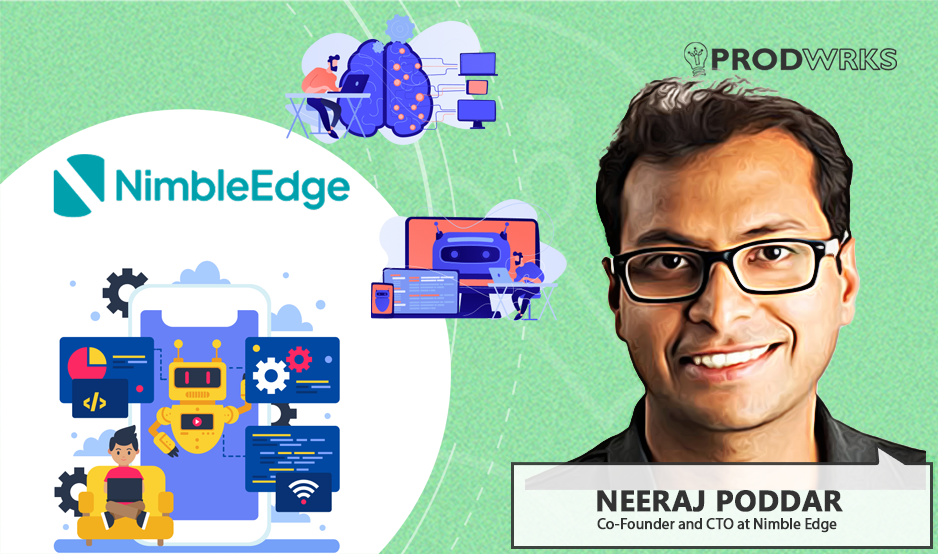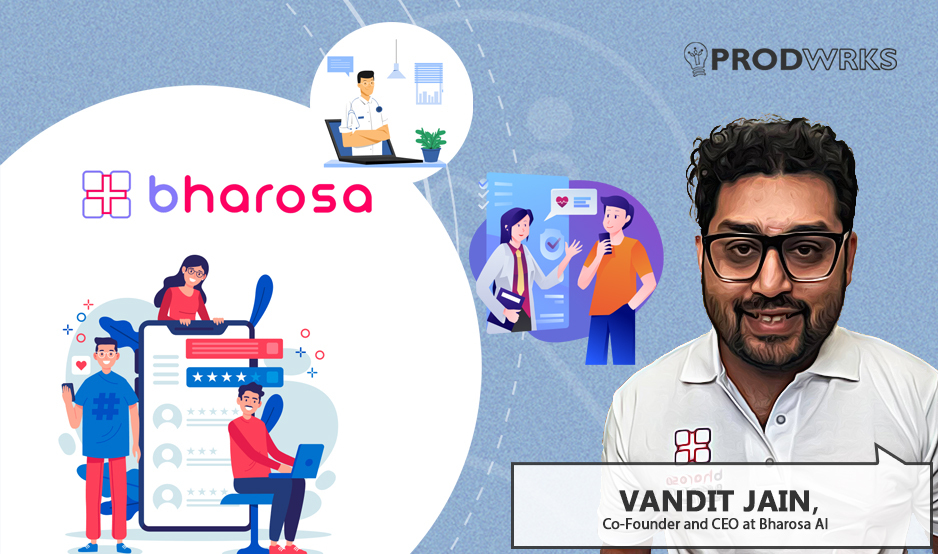
The online food delivery market is projected to grow at a CAGR of 13.26% between 2025 and 2030, reaching a market volume of US$102.43 billion by 2030, according to Statista. It is a booming yet challenging space where platforms often push deep discounts, creating a race that strains eateries’ margins and sustainability.
This challenge hit home for Krishna Prathab RV, founder and CEO of Hopsticks, while running his health juice chain, Smoothie Bar.
“A restaurant can never win the discount game,” he says. “There will always be someone offering more, and it only makes the business unsustainable.”
In response, Krishna launched Hopsticks, a Pondicherry-based B2B2C platform serving 60,000 users. As a pro-restaurant startup, Hopsticks focuses on fair pricing and restaurant empowerment, offering a sustainable alternative to other aggregator platforms. “We want to build a fair platform which is fair for both the customers and the restaurants,” Krishna emphasizes.
In a conversation with Prodwrks, he shares what went behind building Hopsticks.
Bargain Hungry Customers and Ever-Increasing Commissions
“At the peak, we had about 30 to 35 different apps or products across iPhone and Android,” Krishna recalls. “We had about 25 to 30 million users across these apps. So that gave me a lot of courage to build products.”
Though product-building remained central to his work, Krishna was also drawn to healthy eating. He and his wife launched Smoothie Bar, a health juice chain, as a side venture. Running the business gave him a first-hand view of the challenges restaurants faced when working with food delivery platforms.
One major issue was the use of pricing discounts to lure customers. Krishna recalls a moment that shifted his thinking.
“Sometimes, platforms would buy our smoothies from us for 150 rupees and sell them for literally one rupee. I was happy the product was selling, but I was concerned about the kind of customers it was reaching.”
“We could have done the same and continued like everyone else,” he says. “But what I saw was that the industry was slowly being killed by both the monopolies.”
Conversations with restaurant owners across Chennai and Bangalore revealed the same frustrations, with no meaningful alternatives. Drawing on his tech background and product experience, Krishna decided to step in and build Hopsticks
Building a Pro Restaurant App for Restaurants
Hopsticks originally launched as an IoT-based platform aimed at boosting footfall to restaurants through table pre-bookings and location-based offers. The idea was to help restaurants counter the drop in dine-in traffic driven by the rise of food delivery platforms.
However, when COVID-19 lockdowns brought dine-in business to a halt, Hopsticks was forced to pivot. The platform quickly transitioned into a delivery-first model to stay afloat.
“As a founder, you build your team and product around a vision, but external factors like COVID can completely shift your direction,” Krishna says.
Hopsticks now offers a more flexible and restaurant-friendly delivery model compared to traditional aggregators. Rather than locking partners into a one-size-fits-all commission, it gives them the option to choose from three distinct pricing tiers:
- Exclusive Tier: For restaurants that list only on Hopsticks and maintain in-house pricing. The commission is less than half of what other platforms typically charge.
- Fair Price Tier: Designed for restaurants that are present on multiple platforms but retain their in-house menu pricing. Hopsticks charges 10 to 15 percent less than competitors.
- Market Price Tier: For those that increase menu prices on delivery apps, Hopsticks still takes 5 to 6 percent less in commission than other aggregators.
Despite charging lower fees, the business remains profitable. Krishna credits this to a lean team structure and tightly managed costs.
“We don’t have a 3,000-person team. Our costs are lower, and every order is unit-level profitable,” he says. “It’s a matter of scale. Instead of making a thousand rupees from ten orders, we do it in fifteen or twenty. But every order counts.”
The platform also gives restaurants more operational control by enabling on-the-fly promotions. If a restaurant has excess inventory, it can launch flash sales independently, offering discounts on specific dishes in real time.
Krishna says, “Let's say a restaurant prepares about 100 plates of biryani, and then you would discover that only about 50 plates have been sold. So we let our restaurants run these deals on the fly when they want, where they could do just like a 50% or whatever discount they want for that portion for that day, just for that dish.”
Building Sticky Relationships Through Quality Over Price Cuts
Hopsticks stands out by avoiding the use of coupons, discounts, and the common ten-minute delivery promises seen on other platforms. Instead, it opts for a more thoughtful 25-30-minute delivery window, prioritizing quality over speed to steer clear of ultra-fast delivery models that may rely on pre-cooked or reheated meals.
The restaurants partnered with Hopsticks are carefully selected based on their ratings to ensure a high-quality food experience. This approach resonates with users aged 30 and above, who value consistent, quality food over time-sensitive deals and discounts.
“There have been times when restaurants wanted to partner with us, but we had to decline politely,” says Krishna. “We only onboard places I would personally eat from. As a food aggregator, you impact customer health. Good food takes time, and we chose this model deliberately to stay conscious of that. That’s the kind of differentiator we want to be.”
The key features for users include:
- Transparent Pricing: Users see the same prices on the app as they would on the restaurant’s menu, with no inflated costs compared to competitors.
- Exclusive Restaurants: Hopsticks provides access to local restaurants that are not listed on other food ordering platforms.
- Hidden Gems: The platform lists local favorites, such as hawker stalls and small roadside shops, which are not typically available on other delivery platforms.
- Takeaway Option: Users can place orders for pickup, avoiding delivery charges while retaining the convenience of ordering in advance.
Krishna explains, “When you place an order, the app gives you the option to choose between delivery or takeaway. If you select takeaway, the process remains the same, but instead of delivery, once the food is ready, you get a notification letting you know your order is ready for pickup.”
"We could have taken the same route as others by raising millions, chasing valuations, and using gimmicks, but we consciously chose not to. We understand that our growth might be slow, with a smaller user base, but those who genuinely stick with us are the ones who understand our value and come back daily. We focus on serving them well.”
Marketing Without the Megaphone
Hopsticks’ marketing strategy focuses on leveraging restaurant visibility rather than promoting the platform itself. Without the budget for large-scale advertising, the company uses targeted tactics such as distributing flyers at partner restaurants and placing billboards outside these locations. This strategy capitalizes on the fact that customers typically choose food based on the restaurant, not the delivery platform.
“Competing with the larger players in this market is like trying to match them with a much smaller arsenal, as they would outcompete miles?” Krishna explains. Instead, we rely on the natural visibility that comes from working with restaurants that already have strong local followings.”
“Since we have such a good working relationship with the restaurants, they themselves tell their customers, ‘If you want to order, just order through Hopsticks.’”
Tracking Health Trends and Building Features for Conscious Eating
“We look at innovation that makes users healthier, not just spending more. If you’re ordering a burger, fries, and a milkshake, can we show you that the total is 2,500 calories, and then as you remove an item, the calories drop too? Can we recommend a healthier alternative that still satisfies the same craving?”
“We are seriously looking into it. Getting the exact calorie count is hard because every restaurant uses different recipes and ingredients, but we’re working on ways to give some indication.”



